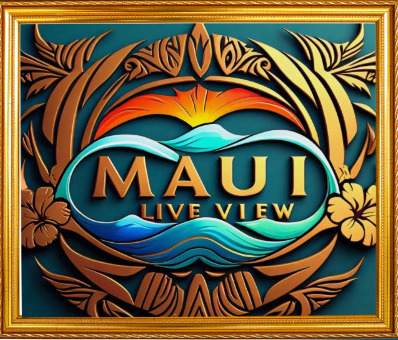Manawainui Gulch, Maui Webcams
Manawainui Gulch (South Maui) FAA Webcam
Manawainui: A Tapestry of Natural Beauty and Cultural Significance on Maui
Ancient Origins and Hawaiian Settlement
Manawainui Gulch, Maui Webcams. Manawainui, a region located on the island of Maui, is steeped in history and cultural significance. The area has been inhabited for centuries by the indigenous Hawaiians, who arrived on the island more than a thousand years ago. These early settlers brought with them their customs, traditions, and agricultural practices, establishing thriving communities in the fertile valleys and along the coastlines.
The ancient Hawaiians held a deep reverence for the land and its natural resources. They practiced sustainable agriculture, cultivating crops such as taro, sweet potatoes, and bananas, and developed complex irrigation systems to support their farming. The region of Manawainui was known for its lush landscapes and abundant water sources, making it an ideal location for settlement.
Manawainui was also home to several significant cultural sites, including heiau (temples) and fishponds. These structures were integral to the spiritual and economic life of the ancient Hawaiians, serving as places of worship and sustenance. The area’s rich cultural heritage is still evident today, with many of these historical sites preserved and protected.
European Contact and Missionary Influence
The arrival of European explorers in the late 18th century marked a significant turning point in the history of Manawainui. The first recorded European contact with Maui occurred in 1778, when Captain James Cook and his crew arrived in the Hawaiian Islands. The introduction of new technologies, diseases, and cultural practices brought profound changes to Hawaiian society.
In the early 19th century, Christian missionaries arrived on Maui, seeking to convert the native population to Christianity. The missionaries established churches and schools, promoting literacy and education among the Hawaiians. They also played a crucial role in recording and preserving Hawaiian oral traditions and history.
One of the most notable missionaries on Maui was Reverend William Richards, who arrived in the 1820s. His efforts to educate the Hawaiian people and promote the written language had a lasting impact on the region. The missionary influence also led to significant changes in the social and cultural landscape of Manawainui, as traditional Hawaiian practices began to blend with Western customs.
The Plantation Era and Economic Transformation
The mid-19th century saw the rise of the plantation economy in Hawaii, with the establishment of large-scale sugarcane and pineapple plantations. Manawainui, with its fertile land and favorable climate, became an important area for agricultural development. The plantation era brought significant economic growth to Maui, attracting laborers from around the world, including Chinese, Japanese, Portuguese, and Filipino immigrants.
The introduction of sugarcane and pineapple cultivation transformed the landscape of Manawainui, as fields of these crops replaced traditional taro patches and other native vegetation. The plantation economy also brought about significant social changes, as the diverse immigrant labor force contributed to the multicultural fabric of Hawaiian society.
Despite the economic benefits, the plantation era also posed challenges to the environment and the traditional way of life in Manawainui. The large-scale agriculture practices led to soil erosion, deforestation, and other environmental impacts. Additionally, the introduction of new crops and labor systems disrupted the traditional Hawaiian agricultural practices and social structures.
Modern Development and Cultural Preservation
In the latter half of the 20th century, the decline of the sugarcane and pineapple industries prompted a shift in the economy of Manawainui. The region began to focus more on tourism and sustainable agriculture, reflecting a broader trend across the Hawaiian Islands. Efforts to preserve the cultural and natural heritage of Manawainui became a priority for the community.
Today, Manawainui is known for its stunning natural beauty, with lush valleys, dramatic cliffs, and pristine beaches. The area attracts visitors seeking to experience the unspoiled landscapes and learn about the rich cultural history of Maui. Eco-tourism and cultural tourism have become important aspects of the local economy, with activities such as hiking, snorkeling, and guided tours of historical sites.
Efforts to protect and preserve the cultural heritage of Manawainui are ongoing. Organizations and community groups work to maintain and restore ancient heiau, fishponds, and other significant cultural sites. These efforts ensure that the history and traditions of the Hawaiian people are passed down to future generations.
Challenges and Future Prospects
Manawainui, like many regions in Hawaii, faces challenges as it navigates the balance between development and preservation. The push for economic growth and modern amenities must be weighed against the need to protect the island’s cultural and natural resources. Community involvement and collaboration between various stakeholders are essential to addressing these challenges and ensuring a sustainable future for Manawainui.
Looking ahead, the future of Manawainui will likely involve continued efforts to promote sustainable tourism and agriculture while preserving the cultural and environmental heritage of the region. The area’s history is a testament to the resilience and adaptability of its people, and their commitment to maintaining a harmonious relationship with the land.
Conclusion
Manawainui’s history is a rich tapestry that weaves together ancient Hawaiian traditions, the impact of European contact, the plantation era, and modern development. From its fertile valleys to its sacred cultural sites, Manawainui is a place where the past and present coexist, and where the future is shaped by a commitment to sustainability and cultural preservation. The journey of Manawainui through time is a powerful narrative of resilience, innovation, and the enduring spirit of the Hawaiian people.
For more information, visit the official Maui County, Hawaii website.
